Up To $2,500 OFF at checkout - Ends Dec 12
Free 30-day Returns | Lifetime Warranty
What Is Diamond Cut? The Ultimate Beginner’s Guide

Diamond cut refers to the precision and quality of a diamond’s facets - the tiny, flat surfaces on its surface - and how they are shaped, proportioned, and polished. It is one of four key factors, known as the 4Cs.
1. Introduction
When it comes to buying a diamond, there are a lot of factors to consider, but none is more critical than the diamond’s cut. Often confused with shape, diamond cut is actually a measure of craftsmanship and artistry that determines how well a diamond interacts with light. In this guide, we’ll break down everything you need to know about diamond cutting, from how it’s graded to why it matters more than carat weight. Let’s dive in.
2. What does “diamond cut” mean?
Diamond cut refers to the precision and quality of a diamond’s facets - the tiny, flat surfaces on its surface - and how they are shaped, proportioned, and polished.
It is one of four key factors, known as the 4 Cs. This craftsmanship directly impacts how well a diamond reflects light, creating the sparkle and brilliance we all love.
It’s important to note that cut is not the same as shape. While shape refers to the physical form of the diamond (like round, oval, or princess), cut speaks to the quality of light performance.
A well-cut diamond enhances three key visual aspects:
- Brilliance: The brightness from all the white light reflected.
- Fire: The colorful flashes of light caused by dispersion.
- Scintillation: The sparkle and pattern of light and dark areas when the diamond is moved.
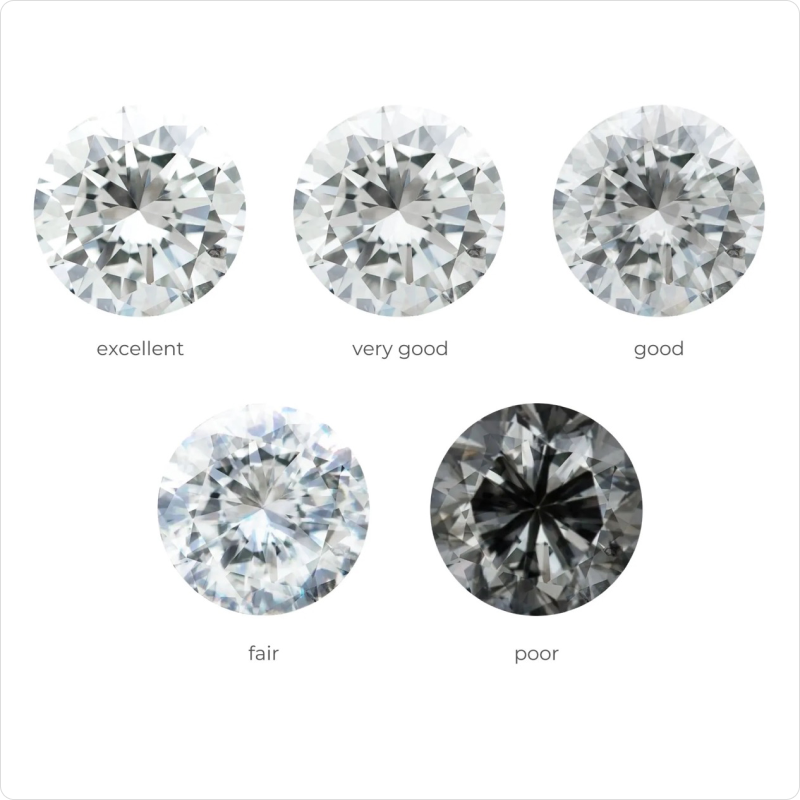

2. What does “diamond cut” mean?
Diamond cut refers to the precision and quality of a diamond’s facets - the tiny, flat surfaces on its surface - and how they are shaped, proportioned, and polished.
It is one of four key factors, known as the 4 Cs. This craftsmanship directly impacts how well a diamond reflects light, creating the sparkle and brilliance we all love.
It’s important to note that cut is not the same as shape. While shape refers to the physical form of the diamond (like round, oval, or princess), cut speaks to the quality of light performance.
A well-cut diamond enhances three key visual aspects:
- Brilliance: The brightness from all the white light reflected.
- Fire: The colorful flashes of light caused by dispersion.
- Scintillation: The sparkle and pattern of light and dark areas when the diamond is moved.
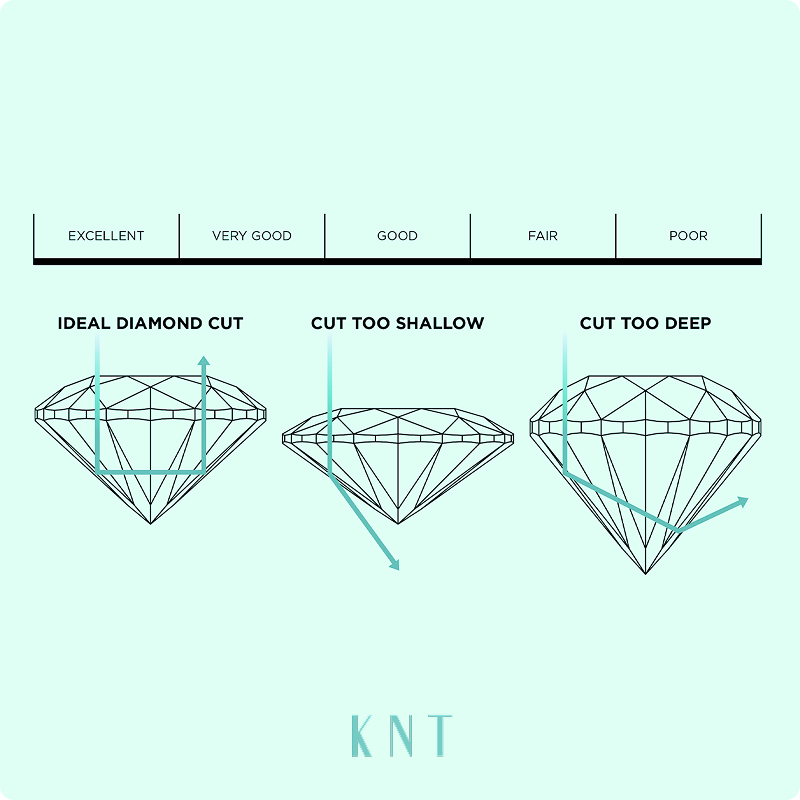
3. The science behind diamond cut
Understanding diamond cut requires a quick dive into the science of light interaction. Here’s what happens when light enters a diamond:
- Refraction: Light bends as it enters the diamond due to its high refractive index.
- Reflection: Inside the diamond, light bounces off internal surfaces, traveling through the facets.
- Dispersion: As light exits, it splits into its spectral colors, creating the “fire” effect.
A well-cut diamond is crafted to maximize these effects, ensuring maximum brilliance and sparkle. Think of it like a series of perfectly angled mirrors: the more precise the angles, the better the light shows. Poorly cut diamonds, on the other hand, leak light and appear dull.

3. The science behind diamond cut
Understanding diamond cut requires a quick dive into the science of light interaction. Here’s what happens when light enters a diamond:
- Refraction: Light bends as it enters the diamond due to its high refractive index.
- Reflection: Inside the diamond, light bounces off internal surfaces, traveling through the facets.
- Dispersion: As light exits, it splits into its spectral colors, creating the “fire” effect.
A well-cut diamond is crafted to maximize these effects, ensuring maximum brilliance and sparkle. Think of it like a series of perfectly angled mirrors: the more precise the angles, the better the light shows. Poorly cut diamonds, on the other hand, leak light and appear dull.
4. Key elements of diamond cut
4.1. Proportions
The proportions of a diamond - such as its depth, table size, and crown angle - directly affect how light interacts within it. For example:
- A diamond that’s too deep or too shallow won’t reflect light properly, reducing brilliance.
- Ideal proportions for a round brilliant cut include a table size of 53-58% and a total depth of 59-62%.
4.2. Symmetry
Symmetry refers to how precisely a diamond’s facets are aligned.
Perfectly aligned facets ensure light is distributed evenly, creating a balanced and sparkling appearance.
Poor symmetry, like misaligned or uneven facets, can result in a diamond that looks dull or has uneven brilliance.
4.3. Polish
Polish is all about the quality of the diamond’s surface finish. A diamond with excellent polish will have a smooth, flawless surface that allows light to enter and exit without distortion. Poor polish can scatter light, reducing the diamond’s sparkle.
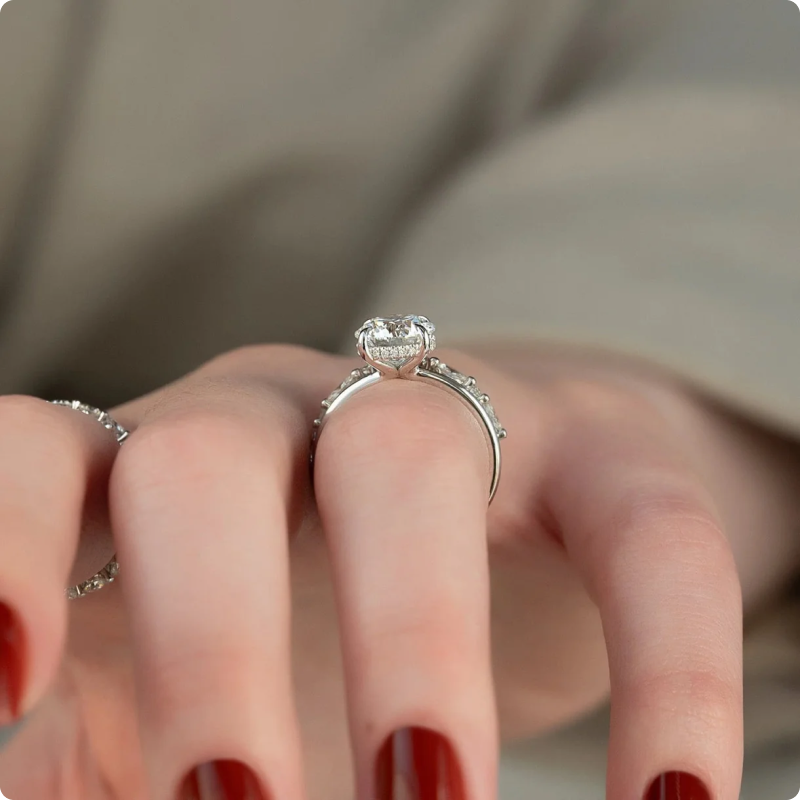

4. Key elements of diamond cut
4.1. Proportions
The proportions of a diamond - such as its depth, table size, and crown angle - directly affect how light interacts within it. For example:
- A diamond that’s too deep or too shallow won’t reflect light properly, reducing brilliance.
- Ideal proportions for a round brilliant cut include a table size of 53-58% and a total depth of 59-62%.
4.2. Symmetry
Symmetry refers to how precisely a diamond’s facets are aligned.
Perfectly aligned facets ensure light is distributed evenly, creating a balanced and sparkling appearance.
Poor symmetry, like misaligned or uneven facets, can result in a diamond that looks dull or has uneven brilliance.
4.3. Polish
Polish is all about the quality of the diamond’s surface finish. A diamond with excellent polish will have a smooth, flawless surface that allows light to enter and exit without distortion. Poor polish can scatter light, reducing the diamond’s sparkle.
5. How diamond cut is graded
5.1. Grading systems
Diamond cut is graded by reputable gemological labs like the GIA (Gemological Institute of America) and AGS (American Gem Society). The grading scale typically includes these categories:
- Excellent: The highest grade, ensuring maximum brilliance and fire.
- Very good: High quality with only minor light leakage.
- Good: Decent performance but noticeable light loss.
- Fair: Limited brilliance and sparkle.
- Poor: Significant light leakage, resulting in a dull appearance.
When shopping for a diamond, prioritize those with “Excellent” or “Very Good” cut grades. These diamonds offer the best balance of beauty and value.
6. Diamond cut vs. diamond shape
It’s easy to confuse cut with shape, but they’re not the same. “Shape” refers to the outline or form of the diamond, such as round, princess, or emerald. “Cut,” on the other hand, describes the quality of craftsmanship that affects how the diamond reflects light. For instance:
- A round brilliant cut is specifically engineered to maximize sparkle.
- Emerald cuts focus more on clarity and elegance than brilliance.
Fun fact: The round brilliant cut is the most popular shape because it’s optimized for maximum sparkle and light performance.

Diamond shape (front) vs. diamond cut (back)
Cut Characteristics
To best understand the cut grade of a diamond, it's important to understand the following characteristics that, when evaluated together, define a high-quality cut.

7. Types of diamond cuts
There are three main cutting styles, each with unique characteristics:
7.1. Brilliant cut
Designed for maximum sparkle, featuring numerous small facets. Examples include:
- Round: The most popular and sparkly cut, engineered to maximize light reflection.
- Oval: A slightly elongated shape with brilliance similar to a round cut.
- Princess: Square-shaped with sharp corners, offering excellent brilliance.
- Marquise: A long, narrow shape that creates the illusion of a larger diamond.
- Pear: A teardrop-shaped cut that combines round and marquise characteristics.
- Heart: A romantic and unique choice with a brilliant cut.
7.2. Step cut
Sleek and elegant, with large, flat facets that emphasize clarity over sparkle. Examples include:
- Emerald: A rectangular cut with step facets that highlight transparency.
- Asscher: Similar to an emerald cut but square-shaped, offering a vintage look.
- Baguette: A narrow rectangular shape often used as side stones.
7.3. Mixed cut
Combines the best of both worlds, balancing brilliance and elegance. Examples include:
- Cushion: A square or rectangular shape with rounded corners and a soft look.
- Radiant: A rectangular or square shape with brilliant-cut facets for extra sparkle.
- Trilliant: A triangular shape with lively brilliance.
Each cutting style creates a distinct look and feel, so choose one that aligns with your personal style.

There are three main cutting styles, each with unique characteristics
8. Why diamond cut matters more than carat weight
Many buyers prioritize carat weight, but diamond cut has a much greater impact on a diamond’s overall appearance. A well-cut diamond can look larger and more brilliant than a poorly cut diamond of the same carat weight. For example:
A 1-carat diamond with an excellent cut will outshine a 1.5-carat diamond with a poor cut.
If you’re working within a budget, prioritize cut quality over size. A smaller, well-cut diamond will always outshine a larger, poorly cut one.
9. How to evaluate diamond cut as a beginner
Not sure how to assess diamond cut? Here are some quick tips:
- Look for GIA or AGS certification to ensure accurate grading.
- Stick to diamonds with “Excellent” or “Very Good” cut grades.
- Use a jeweler’s loupe to inspect symmetry and polish.
- Observe the diamond under different lighting conditions to see its sparkle.
- Consider tools like Ideal Scope or ASET images to analyze light performance.
10. Conclusion
Diamond cut is the single most important factor in determining a diamond’s beauty. It affects everything from sparkle to overall value, making it a top priority when shopping for a diamond.
Whether you’re buying an engagement ring or treating yourself, understanding diamond cut ensures you’ll choose a piece that truly dazzles.
4 CS OF DIAMONDS
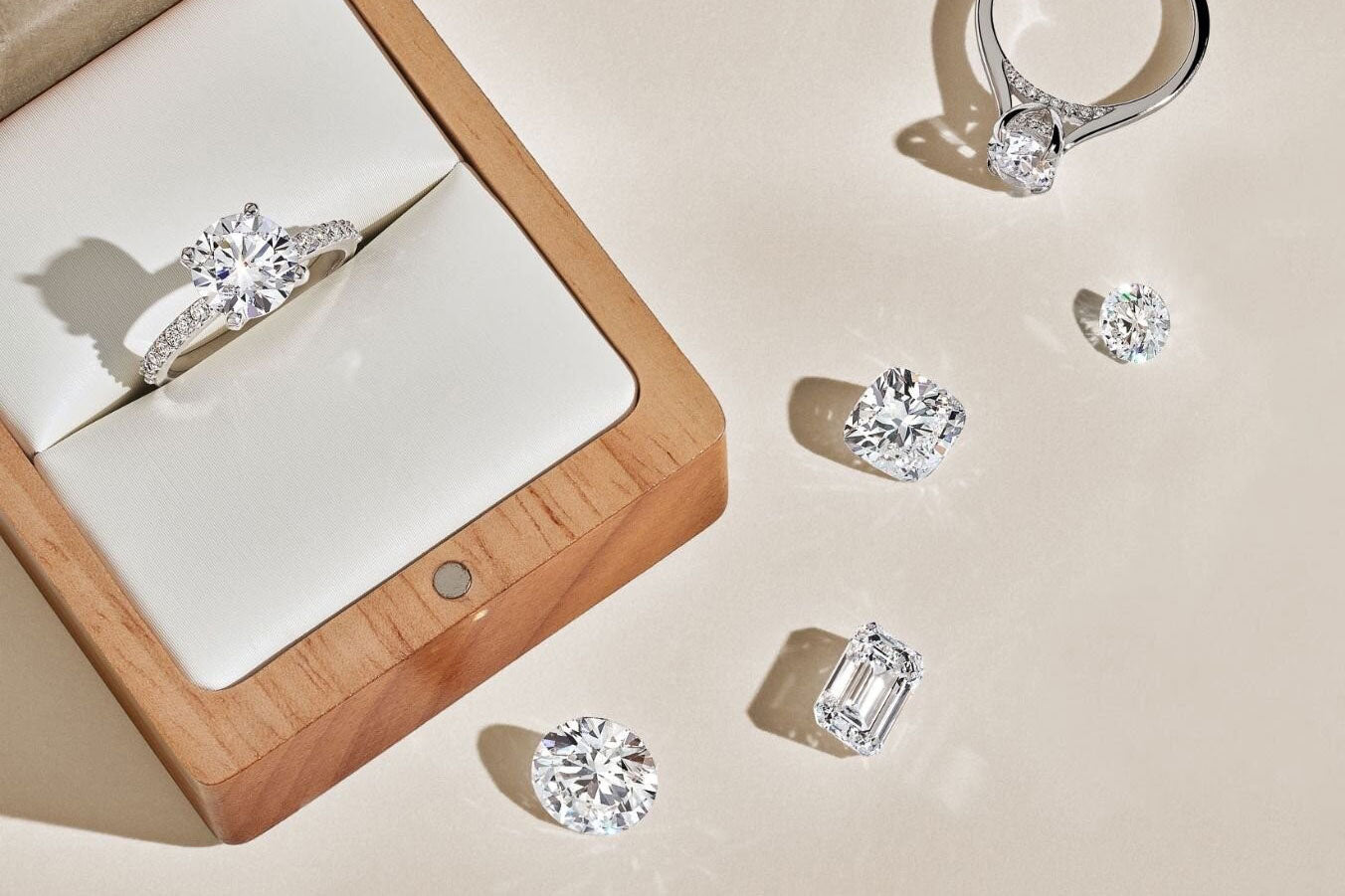
4 Cs of diamond quality
No two diamonds are identical. Each has distinct characteristics. To make an informed choice, focus on the 4 Cs: cut, color, clarity, and carat weight. These factors define a diamond’s brilliance, rarity, and value.
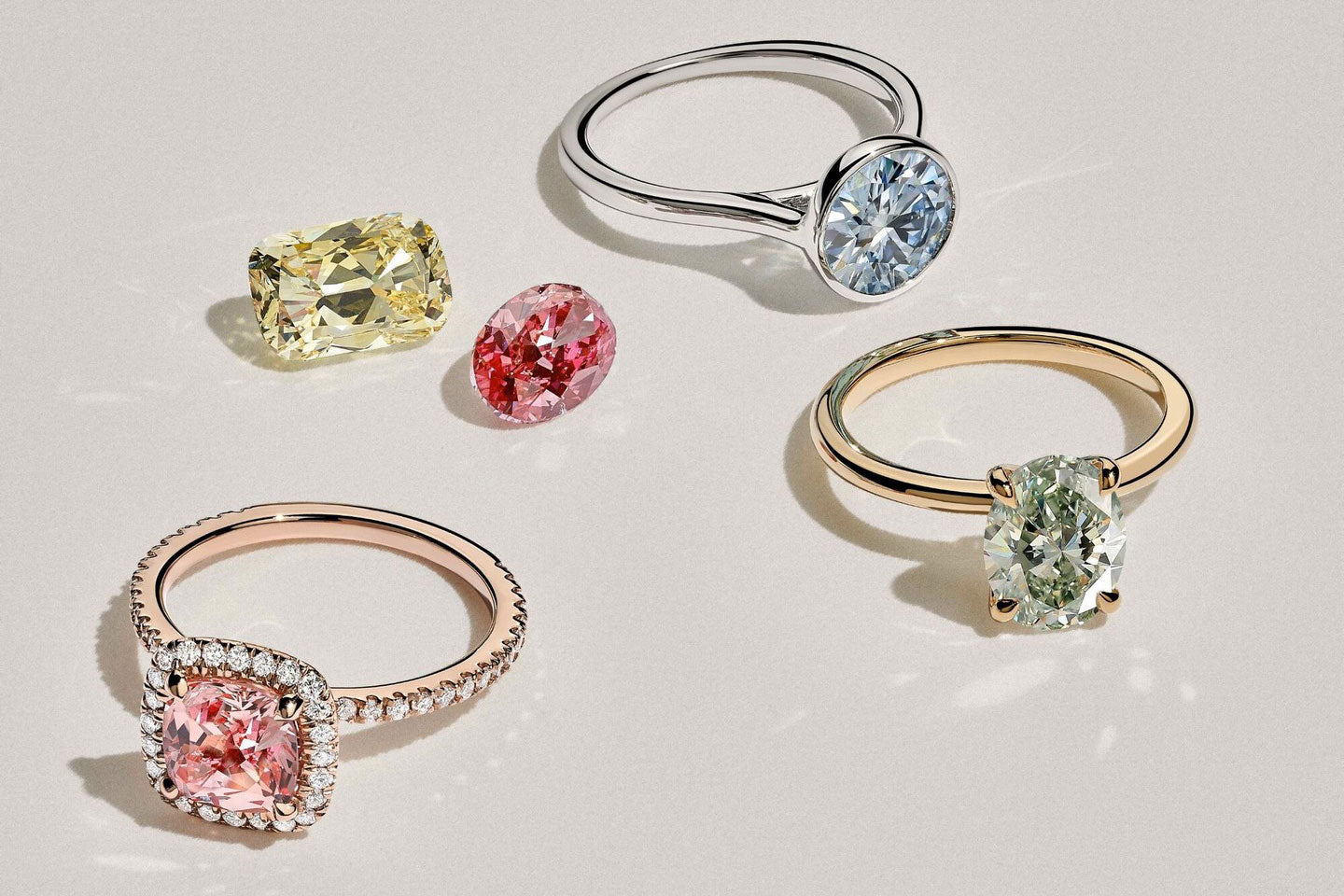
Diamond Color
Diamonds have long been a symbol of love, luxury, and status, and understanding the factors that influence their beauty and value is essential for anyone considering a diamond purchase.
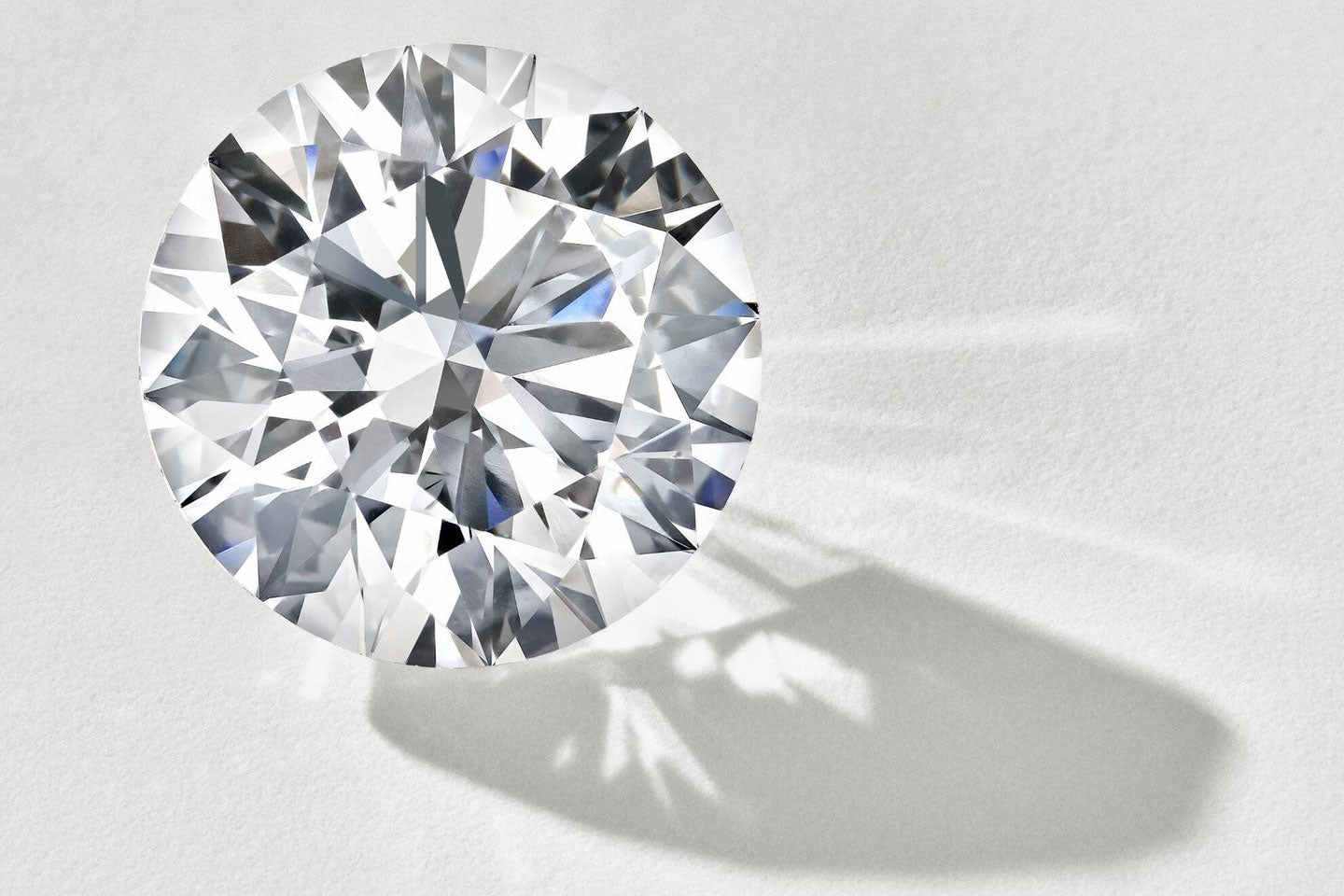
Diamond Clarity
Pair large text with an image to give focus to your chosen product, collection, or blog post. Add details on availability, style, or even provide a review.
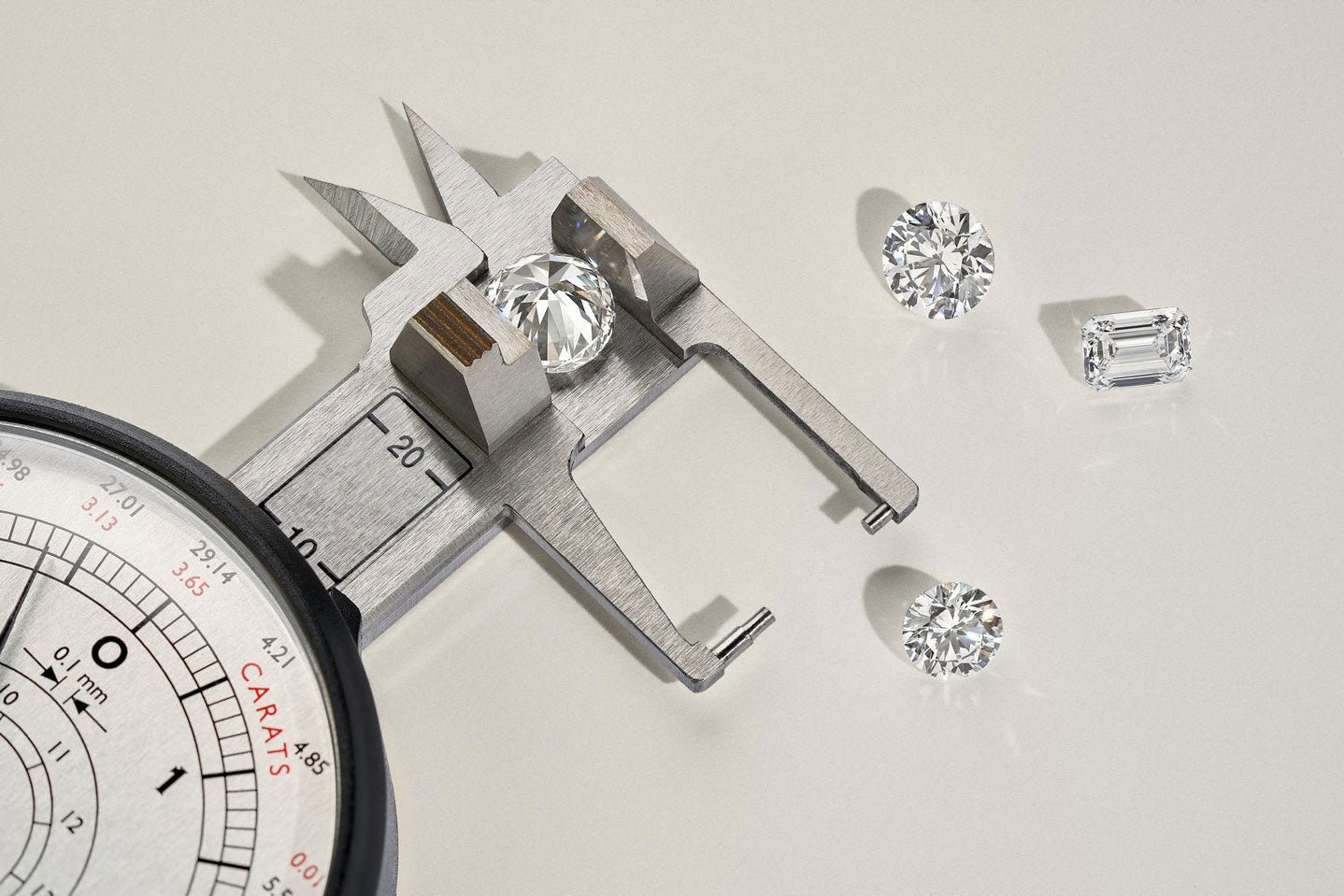
Diamond Carat
A deep dive into how much is a moissanite ring by carat size, factors affecting its value, and tips for selecting the right size for your style and budget.

